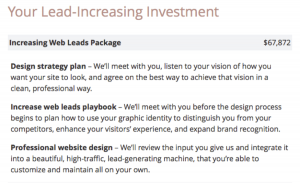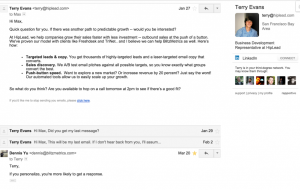According to Bill Gross, the founder of Idealab, there’s one factor that successful startups have all seem to have in common.
“I tried to look at what factors actually accounted the most for success and failure across all of these companies, and the results really surprised me,” he said in his 2015 Ted Talk. “The number one thing was timing. Timing accounted for 42 percent of the difference between success and failure. Team and execution came in second, and the idea, the differentiability of the idea, the uniqueness of the idea, that actually came in third.”
As examples, Gross brings up Airbnb and Uber, which came out during the height of recession and when people needed to make a bit of extra money. On the other hand, he talks about a company he started called Z.com. It was an online entertainment company that failed.
“We were so excited about it — we raised enough money, we had a great business model, we even signed incredibly great Hollywood talent to join the company,” he says. “But broadband penetration was too low in 1999-2000. It was too hard to watch video content online, you had to put codecs in your browser and do all this stuff, and the company eventually went out of business in 2003.”
The catch? YouTube happened to pop up two years later, when Adobe Flash solved the codec problem and 50 percent of America had broadband.YouTube didn’t even have a business model when it first started, but, as, Gross puts it, it was “beautifully, beautifully timed.”
How to Succeed: Be Prepared Before Launch
The problem with timing? There’s no way to predict it!
That’s the idea behind some people just being “lucky” and others being “unlucky” — but there are ways to make sure that when lightning strikes, you are prepared.
The first thing to realize is simply the above: you can’t control anything but yours and your company’s actions. Deciding when to act also comes down to you and whether or not you feel personally ready to begin.
There are factors that can help you decide. For example, how is the market doing? Is your competition thriving? Are you ready to introduce a product or solution that’s different, if not better, than your competition’s? Market testing and research can round these elements out and really give you a clear view of how things might pan out.
Lastly, make sure that you have the right amount of funding before your embark on the journey of a lifetime. Nothing ruins a trip like running out of gas.
How to Fail Properly: Continue Relentlessly
Just like there’s a way to prepare properly for success, there’s also a way to prepare and execute through failure.
The first thing to recognize in failure is that if you continue on the course that you’re failing on, there’s no way to save yourself. Essentially, this means change is absolutely necessary. Ryan Robinson has four tips for those struggling with recovery after small business failure:
- Get into the right mindset. It’s scientifically proven that positive thinking yields better solutions. Make sure that your mind is at ease and not overridden with stress. As Robinson puts its, “if you think you’ll be able to figure this out, then you will. It’s only a matter of assembling the right pieces of the puzzle together until you find the next solution and keep pushing forward.”
- Create the time to review your failures. Robinson urges those reflecting to ask themselves questions, such as:
- Why did you miss on your expectations? Were the goals too high to begin with?
- Could you have done a better job building or managing your team?
- Are you in over your head? Do you really love this line of work you’re in?
- Why did you miss on your expectations? Were the goals too high to begin with?
- Seek outside advice. There’s never shame in asking for help, and actually, asking for outside advisement could be just what the doctor ordered. Sometimes a new set of eyes (especially with years of experience behind them) will see something you missed.
- Try something new (without expectations). This one is truly the only way that will lead firms to self-correction. You’ll just have to try something new and experiment with different solutions. Robinson asks:
- Have you had a hunch about something your customers may want, but you haven’t tested out for one reason or another? Now’s the time to pick up the phone and call a few customers to ask for their feedback.
- Have customers ever given you constructive feedback that could be used to try something new? Maybe they’ve suggested new solutions they’d want from you.
- Is there a new trend, solution or marketing tactic that competitors are making major headway with? It could be time to consider trying out your own version with a unique spin.
- Have you had a hunch about something your customers may want, but you haven’t tested out for one reason or another? Now’s the time to pick up the phone and call a few customers to ask for their feedback.
Just remember — sometimes knowing how to fail properly goes hand in hand with knowing how to succeed. The proverb that instructs to “get back on the horse” is perhaps a bit overplayed, but it’s absolutely true. The only person that can stop you from success is yourself, and that only happens if you keep yourself from getting back on the horse.
Business & Finance Articles on Business 2 Community(107)








